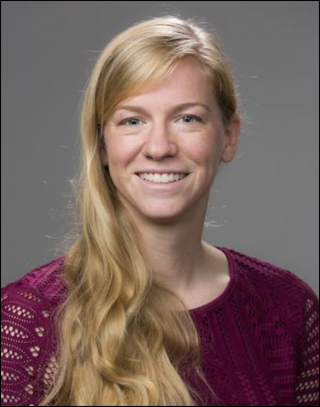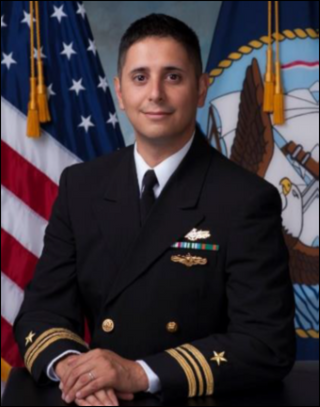12.01.2024

NASA selected a crew of four volunteers to participate in a simulated journey to Mars inside a habitat at the agency’s Johnson Space Center in Houston.
Abhishek Bhagat, Kamak Ebadi, Susan Hilbig, and Ariana Lutsic will enter the ground-based HERA (Human Exploration Research Analog) facility on Friday, Jan. 26, to live and work like astronauts for 45 days during the simulated mission to the Red Planet. Crew members will exit the facility on March 11, after they “return” to Earth. Two additional volunteers are available as backup crew members.
Without leaving Earth, HERA allows scientists to study how crew members adapt to the isolation, confinement, and work conditions astronauts will experience during future spaceflight missions. Crew members will conduct science, operational, and maintenance tasks while facing communication delays with the outside world lasting up to five minutes as they “approach” Mars.
The new crew will participate in 18 human health studies throughout the simulated mission. The experiments will assess the psychological, physiological, and behavioral responses of crew members millions of miles away from their home planet. Ten studies are new to HERA, including seven led by scientists outside the United States. These international studies are collaborations with the United Arab Emirates’ Mohammed Bin Rashid Space Centre and ESA (European Space Agency).
The upcoming mission marks the first of four simulated missions to Mars that researchers will carry out using HERA in 2024. Each mission will include a different crew of four astronaut-like research volunteers. The final mission is slated to end Dec. 16.
Primary Crew
Abhishek Bhagat
 Abhishek Bhagat is a research electrical engineer for the U.S. Army Engineering Research and Development Center’s Cold Region Research and Engineering Lab.
Abhishek Bhagat is a research electrical engineer for the U.S. Army Engineering Research and Development Center’s Cold Region Research and Engineering Lab.
Bhagat holds a bachelor’s degree in engineering from Nagpur University in India, a master’s degree in electrical engineering from California State University in Northridge, and a master’s degree in computer science from the University of North America in Fairfax, Virginia. He is currently pursuing a master’s degree in space systems from the Florida Institute of Technology in Melbourne.
Bhagat began working as a consultant at Samsung Telecom America, which paved the way for subsequent consulting roles with Qualcomm and Sprint. He then served in the U.S. Army. When he transitioned out of active duty, he became an electronics engineer for the Federal Aviation Administration.
Bhagat received the Army Commendation Medal and remains an Army reservist. In his spare time, he enjoys hiking, climbing mountains, and riding motorcycles.
Kamak Ebadi
 Kamak Ebadi is a robotics technologist at NASA’s Jet Propulsion Laboratory (JPL) in Southern California. He is a member of the spaceflight operations team responsible for managing NASA’s Perseverance Rover on Mars. Ebadi also supports NASA’s Artemis program and Mars Sample Return mission through work that helped develop orbital maps and navigation algorithms for the guided descent and precision landing of autonomous spacecraft on the Moon and Mars.
Kamak Ebadi is a robotics technologist at NASA’s Jet Propulsion Laboratory (JPL) in Southern California. He is a member of the spaceflight operations team responsible for managing NASA’s Perseverance Rover on Mars. Ebadi also supports NASA’s Artemis program and Mars Sample Return mission through work that helped develop orbital maps and navigation algorithms for the guided descent and precision landing of autonomous spacecraft on the Moon and Mars.
Born in Tehran, Iran, Ebadi relocated to the United States in 2010, driven by his lifelong aspiration to join NASA. He earned his doctorate in robotics from Santa Clara University in California. He was awarded a doctoral fellowship from JPL in 2017 and helped develop a fleet of autonomous robots to explore uncharted subterranean environments.
Ebadi completed postdoctoral research jointly at the California Institute of Technology in Pasadena and JPL. He developed algorithms that control in-space docking and manipulation of uncooperative space objects, such as defunct satellites and asteroids.
In his spare time, Ebadi participates as a board member for a non-profit organization committed to disrupting the cycle of poverty through education. He advocates for STEM education and engages as a space and science communicator across various social media platforms. He enjoys spending quality time with his family, playing the guitar, participating in sports, maintaining a strict fitness routine, and learning to pilot private aircraft.
Susan Hilbig
 Susan Hilbig, from Durham, North Carolina, is a physician assistant with a focus on aerospace medicine and human performance in isolated, confined environments. She completed her academic training at North Carolina’s Duke University, where she double majored in biology and Earth and ocean science prior to earning a master’s degree in physician assistant studies from Duke University’s School of Medicine.
Susan Hilbig, from Durham, North Carolina, is a physician assistant with a focus on aerospace medicine and human performance in isolated, confined environments. She completed her academic training at North Carolina’s Duke University, where she double majored in biology and Earth and ocean science prior to earning a master’s degree in physician assistant studies from Duke University’s School of Medicine.
Hilbig’s passion for exploration led her to pursue research at remote field sites as an undergraduate, taking her across the world for various projects. Most notably, she traveled to the village of Tsinjoarivo, Madagascar, where she collected data on wild populations of the only lemur known to hibernate. Prior to graduate school, Hilbig worked as a clinical research coordinator in neuroscience with a focus on non-invasive brain stimulation. She subsequently worked as a physician assistant in Duke University’s emergency department.
Hilbig has experience with simulated extreme environments in hyperbaric chambers at Duke University’s Dive Medicine Center. As an avid cyclist, Hilbig has spent years leading weeklong cycling tours in Europe, with a regional focus on the Balkans and Northern Italy. Hilbig is a triathlete and general outdoor enthusiast who enjoys hiking, swimming, and scuba diving.
Ariana Lutsic
 Ariana Lutsic is a scientist and engineer at NASA’s Kennedy Space Center in Florida, specializing in research support for biological payloads on the International Space Station. Over the past seven years, she has held various roles at Kennedy, focusing on plants, animals, and hardware design.
Ariana Lutsic is a scientist and engineer at NASA’s Kennedy Space Center in Florida, specializing in research support for biological payloads on the International Space Station. Over the past seven years, she has held various roles at Kennedy, focusing on plants, animals, and hardware design.
Prior to her work at Kennedy, Lutsic volunteered with conservation and rehabilitation programs at the Sea Turtle Healing Center at the Brevard Zoo. She also served as a kayak guide for bioluminescent tours in the Indian River Lagoon in Florida.
Lutsic obtained her bachelor’s degree in communications from the University of Maryland Global Campus while living in Japan, and earned a master’s degree in space systems from the Florida Institute of Technology. She is currently pursuing another master’s degree at the Florida Institute of Technology, with emphases on marine biology and astrobiology. In her spare time, she enjoys volunteering with STEM programs, coaching youth soccer, and going to the beach with her family.
Back-Up Crew
Gregory Contreras
 Lieutenant Commander Gregory “GM” Contreras is a planner and budget programming analyst for the U.S. Navy’s Integration and Programming Division. He is a native of Pleasant Hill, Calif.
Lieutenant Commander Gregory “GM” Contreras is a planner and budget programming analyst for the U.S. Navy’s Integration and Programming Division. He is a native of Pleasant Hill, Calif.
During his 20 years in the Navy, Contreras worked as a surface warfare officer aboard the USS Chafee in Pearl Harbor, Hawaii. He also served as a space systems engineer and technical representative at the U.S. Department of Defense’s National Reconnaissance Office and as an engineering, technical, and logistics adviser on behalf of the United States for the Royal Saudi Navy.
Contreras earned bachelor’s degrees in naval science and in mechanical engineering in 2007 from the University of Idaho in Moscow. In 2013, he completed a master’s degree in astronautical engineering from the Naval Postgraduate School, Monterey, Calif. His master’s thesis focused on space controls and robotics. He also earned a second master’s degree in engineering administration from Virginia Tech in Fairfax in 2017.
Contreras and his wife have three daughters — Lucia, Alexandra, and Claire — and a cat named Mimi. His passions include playing with his daughters, diving, surfing, and taking long breaks in nature with the family recreational vehicle.
Carli Domenico
 Carli Domenico is a neuroscientist from San Antonio, Texas. She received her doctorate at Baylor College of Medicine, where she studied neural circuits in animal models from pigeons to rats for research that specialized in learning and memory. She has presented her work through talks at conferences, universities, and workshops, and has published in several journals.
Carli Domenico is a neuroscientist from San Antonio, Texas. She received her doctorate at Baylor College of Medicine, where she studied neural circuits in animal models from pigeons to rats for research that specialized in learning and memory. She has presented her work through talks at conferences, universities, and workshops, and has published in several journals.
In pursuit of impactful science communication, Domenico serves as director of academic and professional programming for the Intercollegiate Psychedelics Network. Domenico has also taught courses and programs in STEM for students in middle school, high school, and college.
Domenico received a Bachelor of Science with honors from Texas A&M University, College Station. She interned at Johnson, investigating astronaut cognition and sleep for long-duration spaceflight. Her thesis research included an independent study investigating inflammation and chronic pain in humans.
She recently received her certification as a yoga instructor. In her free time, she teaches at her community’s aging center, where she volunteers by leading activities and delivering meals. Domenico lives in Cleveland with her husband, golden retriever, and two cats. She enjoys live music, hiking, yoga, cooking, and soccer.
____
NASA’s Human Research Program, or HRP, pursues the best methods and technologies to support safe, productive human space travel. Through science conducted in laboratories, ground-based analogs, and the International Space Station, HRP scrutinizes how spaceflight affects human bodies and behaviors. Such research drives HRP’s quest to innovate ways that keep astronauts healthy and mission-ready as space travel expands to the Moon, Mars, and beyond.
Quelle: NASA
